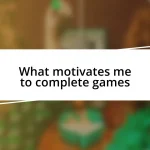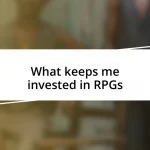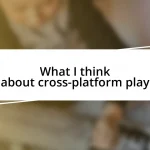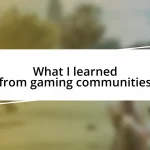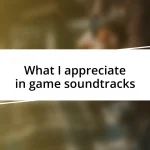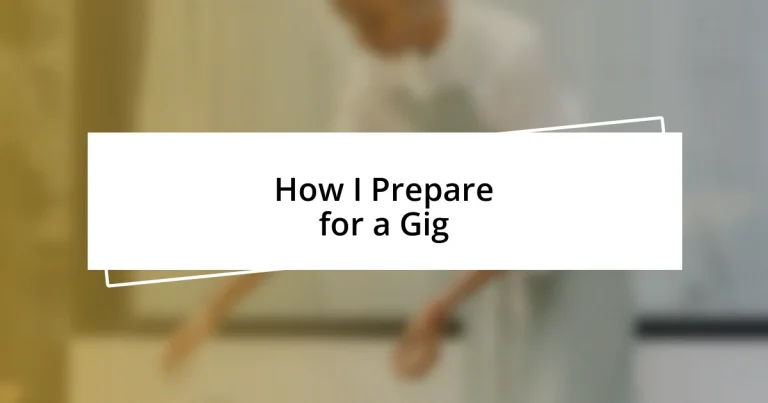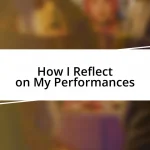Key takeaways:
- Understanding gig requirements and the client’s vision is essential for tailoring a performance that resonates with the audience.
- Effective rehearsal schedules combine structure with flexibility, fostering both focused practice and spontaneous creativity.
- Post-gig evaluations, including personal reflections and audience feedback, are vital for identifying strengths and areas for improvement in performances.
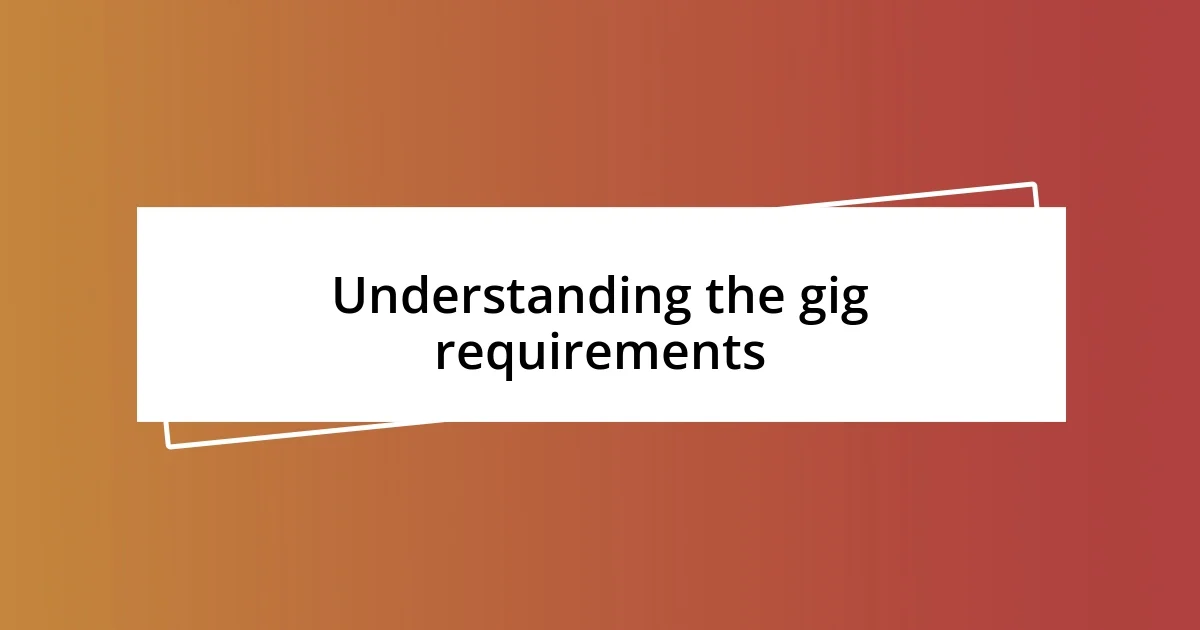
Understanding the gig requirements
Understanding the requirements for a gig is essential. It goes beyond just knowing the songs or setlist; I often find myself digging into the client’s vision. What mood are they trying to create? How do they want their guests to feel? These questions help me tailor my performance to their needs, ensuring an unforgettable experience.
I remember preparing for a wedding gig a while back where the couple wanted a mix of upbeat songs and heartfelt ballads. Initially, I thought it would be straightforward, but as I chatted with them, I realized they wanted something unique and personal to tell their story through music. It hit me how critical it was to align my performance with their expectations, strengthening their connection to the moment.
Have you ever been in a situation where you felt out of sync with the audience? I have, and it often stems from not fully understanding the gig requirements, whether that’s the energy level or the style of the event. Each gig is its own little world, and grasping the nuances can make all the difference in delivering a performance that truly resonates.
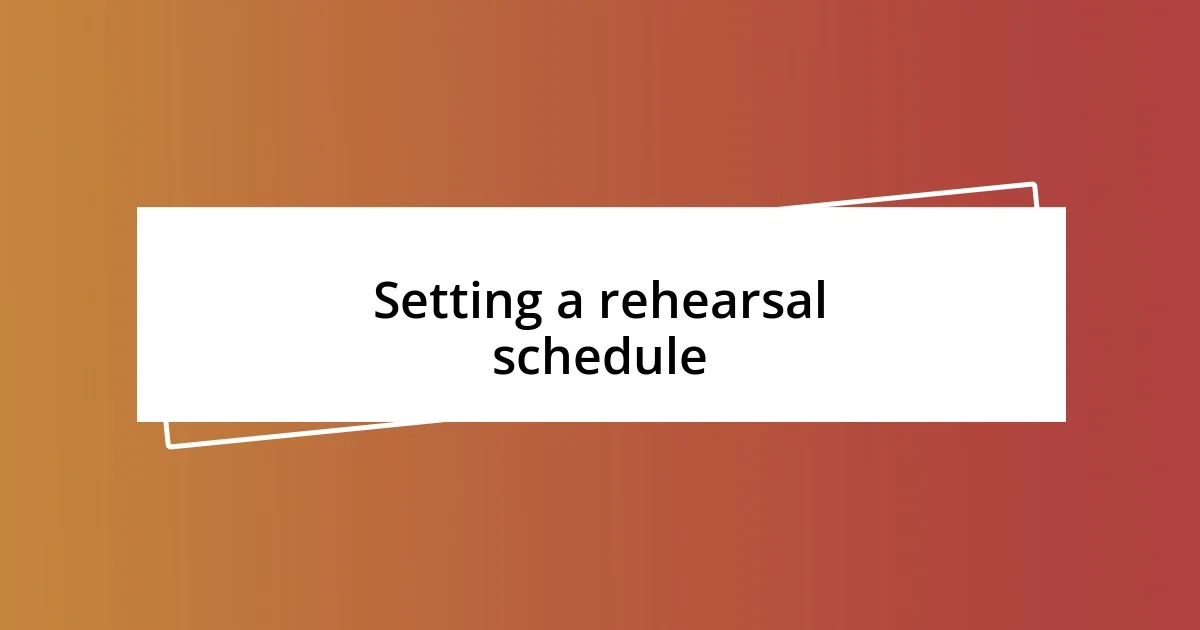
Setting a rehearsal schedule
When it comes to setting a rehearsal schedule, I find it crucial to create a structured yet flexible plan that accommodates the needs of the band and the demands of the gig. I usually start by designating specific days and times, making sure everyone is on the same page. It’s all about balance; I try not to overwhelm my bandmates while ensuring we’re well-prepared.
- Prioritize availability: Schedule around members’ commitments.
- Set clear goals: Decide what needs to be accomplished in each session.
- Build in breaks: Prevent burnout with short, restorative pauses.
- Record sessions: Document progress for self-reflection and improvement.
Reflecting on one rehearsal that stood out to me, we had a jam session that spontaneously turned into something magical. We weren’t just running through the setlist; we were experimenting and discovering new sounds. That organic creativity can only happen when the rehearsal schedule allows space for it, so I’ve learned to carve out time for those unexpected moments. Finding that blend of focused practice and free-range exploration not only elevates our performance but strengthens our bond as a group, enriching the overall gig experience.
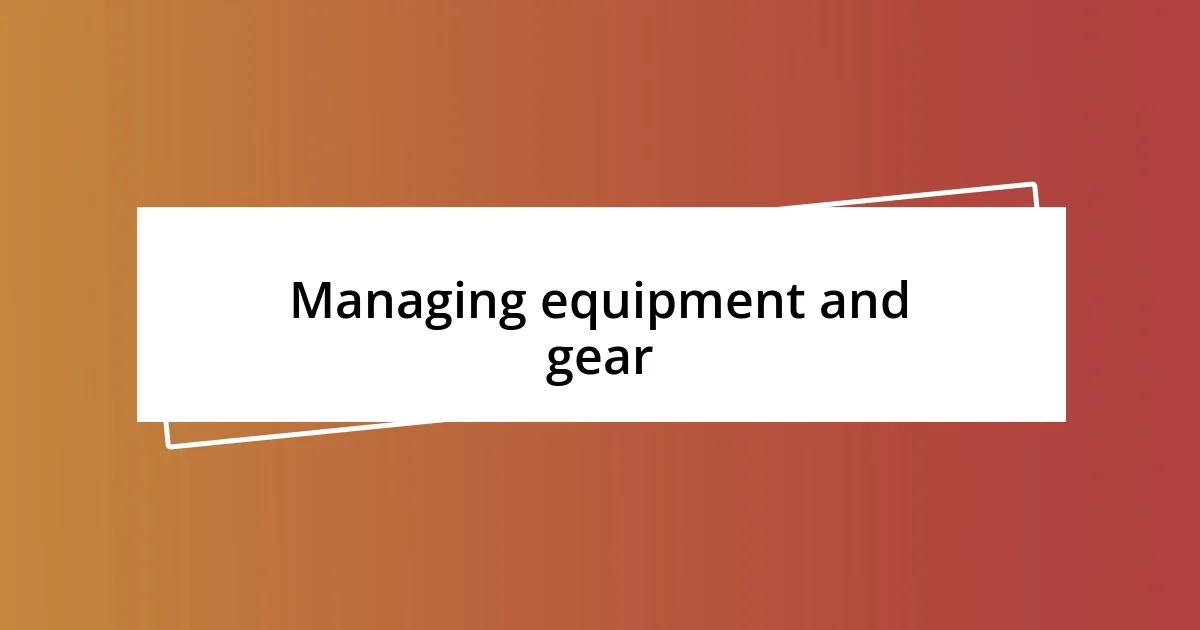
Managing equipment and gear
Managing equipment and gear is a critical aspect of preparing for a gig that often gets overlooked. I meticulously check each piece of gear days in advance, ensuring everything from cables to instruments is in top shape. There was one particular time I nearly forgot my guitar tuner, which led to a frantic search just moments before I went on stage. That taught me to create a detailed checklist and stick to it; a little foresight can save a lot of stress.
The logistics of transporting gear can also be a feat in itself. I usually spend time carefully packing my equipment, making sure each item has its designated spot to prevent any damage. I remember a gig where I had to transport my equipment in a rush, and while my guitar made it unscathed, my speaker didn’t fare so well. It’s these experiences that made me realize the importance of investing in reliable cases and organizing gear methodically for easy access.
Lastly, I really appreciate the value of having a backup plan. Whether it’s an extra set of strings or a spare microphone, being prepared can keep Disaster at bay. One time, during a live performance, my mic cut out. Luckily, I had a backup ready, which allowed me to continue seamlessly. This kind of preparedness gives me peace of mind and allows me to focus on delivering an unforgettable experience to my audience.
| Aspect | Details |
|---|---|
| Gear Check | Ensure all equipment is in top condition before the gig. |
| Packing | Organize gear for transport to prevent damage and ensure easy access. |
| Backup Plan | Have spare instruments or gear ready to handle unexpected issues. |
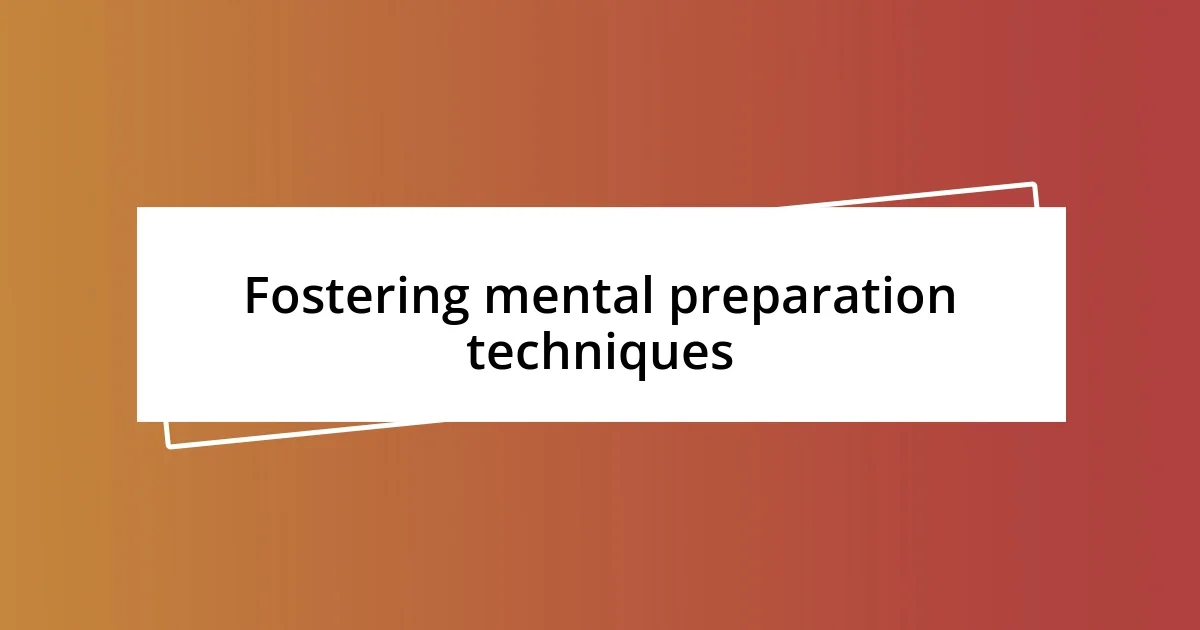
Fostering mental preparation techniques
Fostering mental preparation techniques is often as crucial as the physical aspects of gig preparation. One technique that works wonders for me is visualization. Before I step on stage, I close my eyes and mentally rehearse the entire performance, seeing myself connecting with the audience, hitting every note perfectly, and feeling that vibrant energy in the room. This practice calms my nerves and reinforces my confidence, so I encourage you to give it a try. Have you ever considered how a few moments of deep visualization could transform your performance?
Another method I rely on is establishing a pre-gig ritual. I find solace in certain routines, whether it’s listening to a specific playlist or meditating for a few minutes in silence. One night, I noticed that after I performed a quick breathing exercise, my stage fright melted away, and I felt present with the crowd. It’s fascinating how small rituals can ground us and help maintain focus amidst the excitement. What rituals might you explore to boost your mental readiness?
Finally, I believe in the power of positive affirmations. On the day of a gig, I take a moment to remind myself of my abilities, reciting phrases like “I am prepared” or “I will connect with my audience.” These simple words can shift my mindset, transforming anxiety into excitement. There was one performance where I felt the weight of self-doubt creeping in, but those affirmations provided just enough of a mental nudge to get me through. Have you experienced a shift in your mindset through a simple statement?
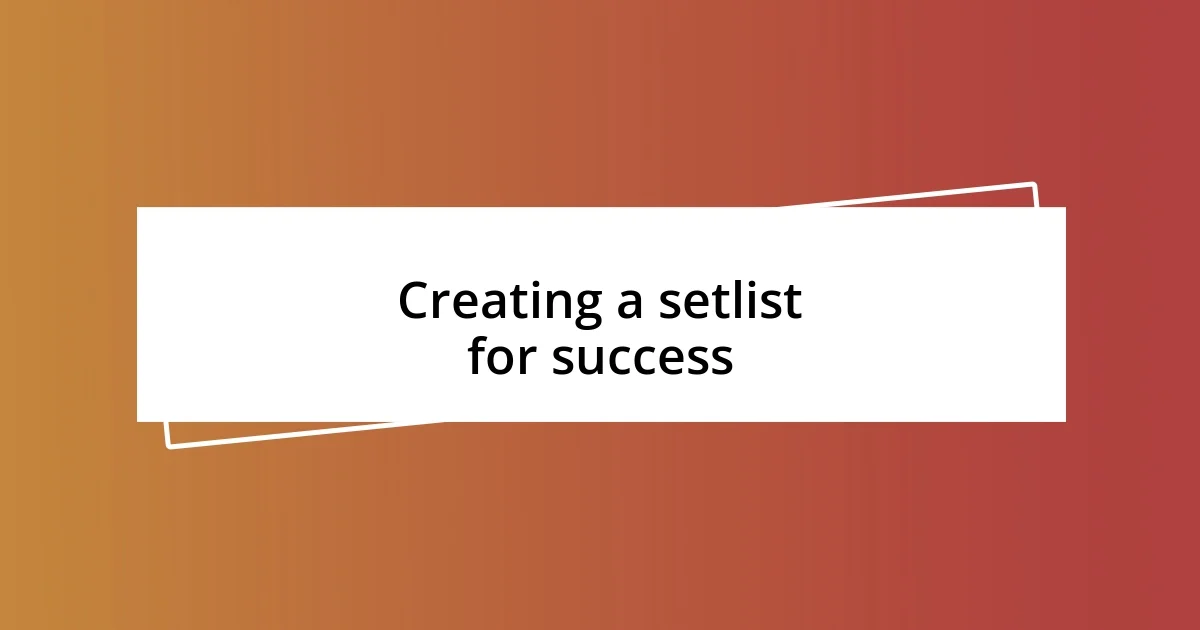
Creating a setlist for success
Creating a setlist is more than just picking songs; it’s an art that shapes the entire vibe of the gig. I’ve learned to balance crowd favorites with a couple of deeper cuts that showcase my musical range. One memorable time, I threw in an unexpected song that wasn’t even my biggest hit, and I could feel the audience’s enthusiasm surge. It’s amazing how a well-thought-out surprise can elevate the energy in the room.
When I craft a setlist, I think about the flow of the music. I aim to take the audience on a journey, with highs and lows that resonate emotionally. There was this one concert where I started with a high-energy track, followed it with a heartfelt ballad, and ended with an anthem that had everyone singing along. The transitions created a beautifully cohesive experience, pulling people in at every turn. Have you noticed how a well-curated setlist can turn an average concert into a memorable event?
Finally, I always consider the time constraints and the audience demographic. One time, I miscalculated and played too many slow songs for a lively crowd. The audience’s restlessness was palpable, and it was a lesson in adapting my setlist to fit the moment. Engaging with your audience means knowing when to play it safe and when to take creative risks. What’s your experience been like trying to read the room during a performance?
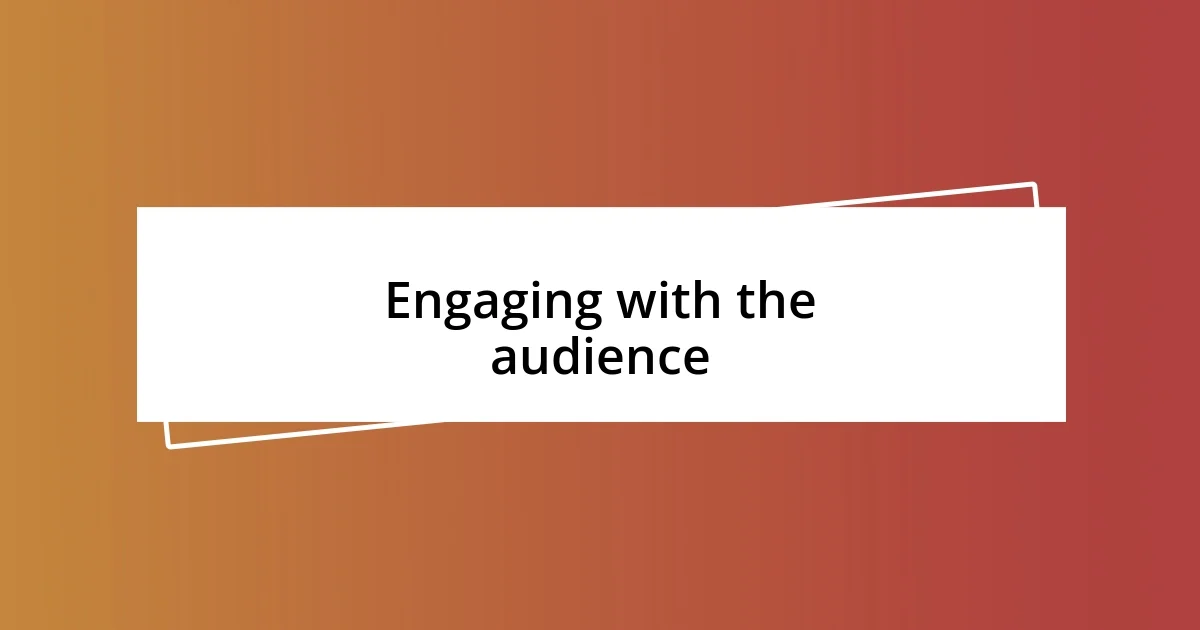
Engaging with the audience
Connecting with the audience is not just about performing; it’s about creating a shared experience. I remember a gig where I spontaneously invited a couple of fans on stage during my set. The energy shifted instantly, and seeing their joyful faces made it one of my favorite moments. Have you ever witnessed the magic that happens when you break the barrier between performer and audience?
I also find that eye contact plays a crucial role in engagement. During a performance, locking eyes with someone in the crowd can create an unexpected intimacy. There was a moment when I made eye contact with a fan who was singing along passionately, and it felt like we were sharing something special, even amidst a sea of people. How often do you take the time to connect with individuals in your audience?
Incorporating audience participation can elevate the performance to a whole new level. I’ve tried using call-and-response techniques, and the thrill of hearing the crowd echo back my lyrics is indescribable. At one show, I encouraged everyone to clap along, and the energy in the room surged, turning each beat into a collective celebration. When have you felt that exhilarating connection with an audience?
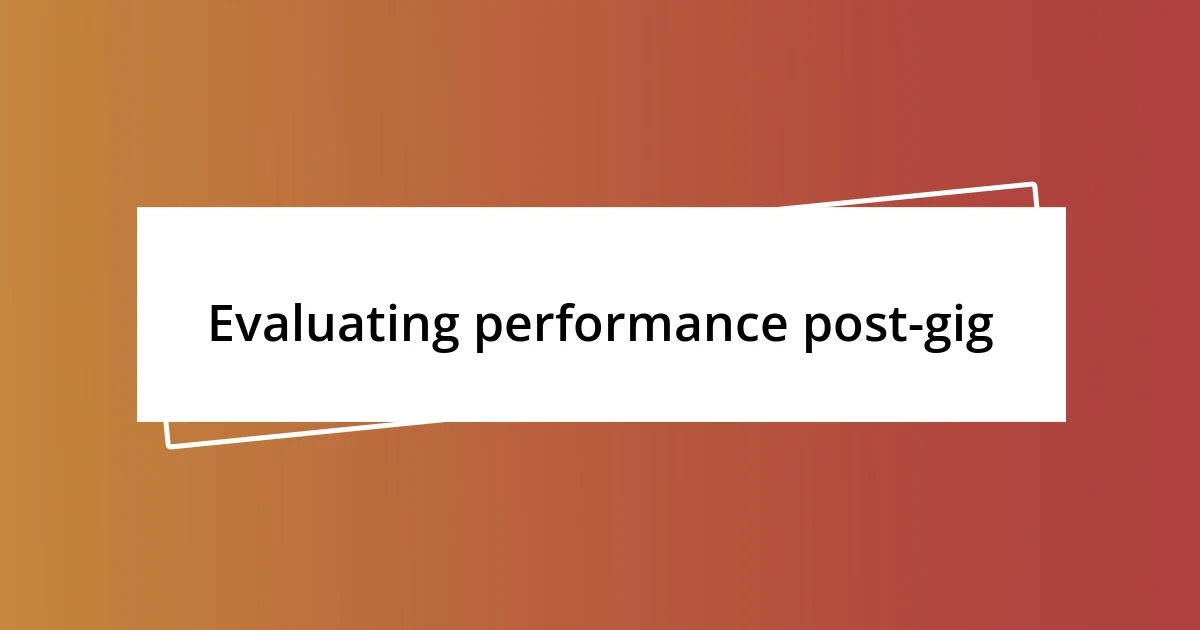
Evaluating performance post-gig
Evaluating my performance after a gig feels like reflecting on a snapshot of my artistry in motion. I often jot down quick notes right after I step off stage; it’s amazing how the adrenaline fades and suddenly, I can see both the highs and the lows more clearly. For instance, after an electrifying show, I realized that while I connected deeply with the audience, my transitions between songs could use a little polish—an area for growth that I find invigorating.
I also turn to recordings of my performances. Listening back can be a bittersweet experience; hear me out, though—it’s where I discover my strengths and areas for improvement. There was one time I caught myself rushing through a crucial bridge, and it made me realize how much the tempo impacts emotional delivery. Have you ever listened back to something you performed and been surprised by what you heard?
Feedback from the audience is priceless, too. After one show, I took a moment to chat with a few fans who approached me about their favorite moments. Their insights not only warmed my heart, but they also confirmed what I felt was working well—and what wasn’t. How often do we reflect on our audience’s reactions to guide us moving forward? They can offer a perspective that we, as performers, sometimes overlook.
